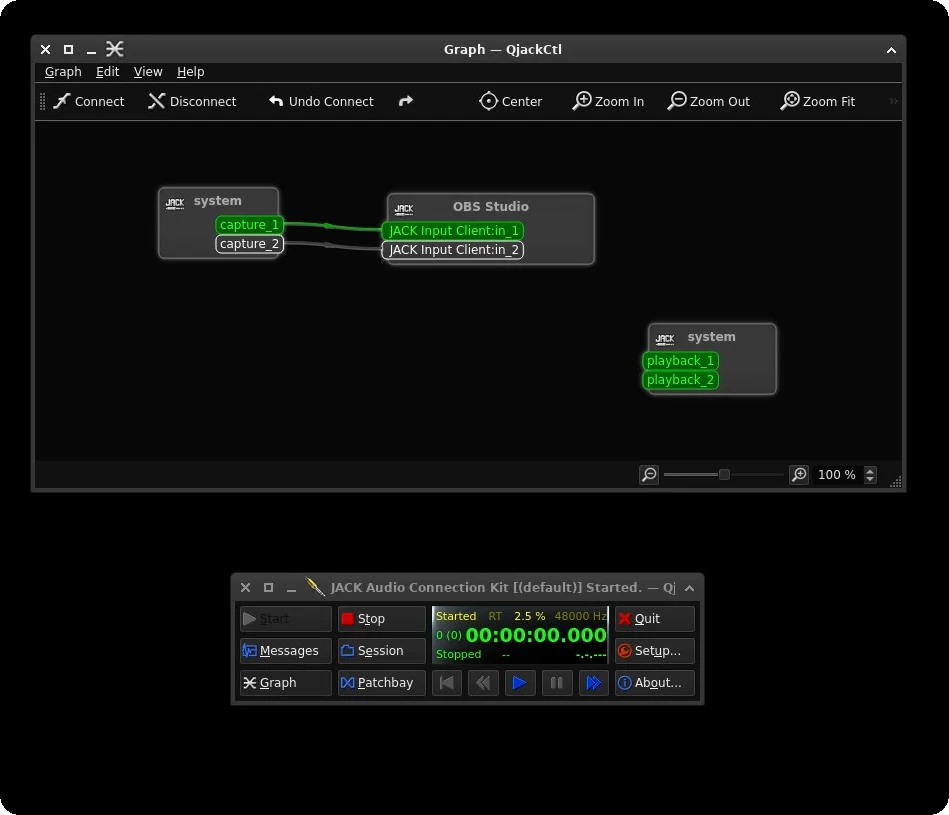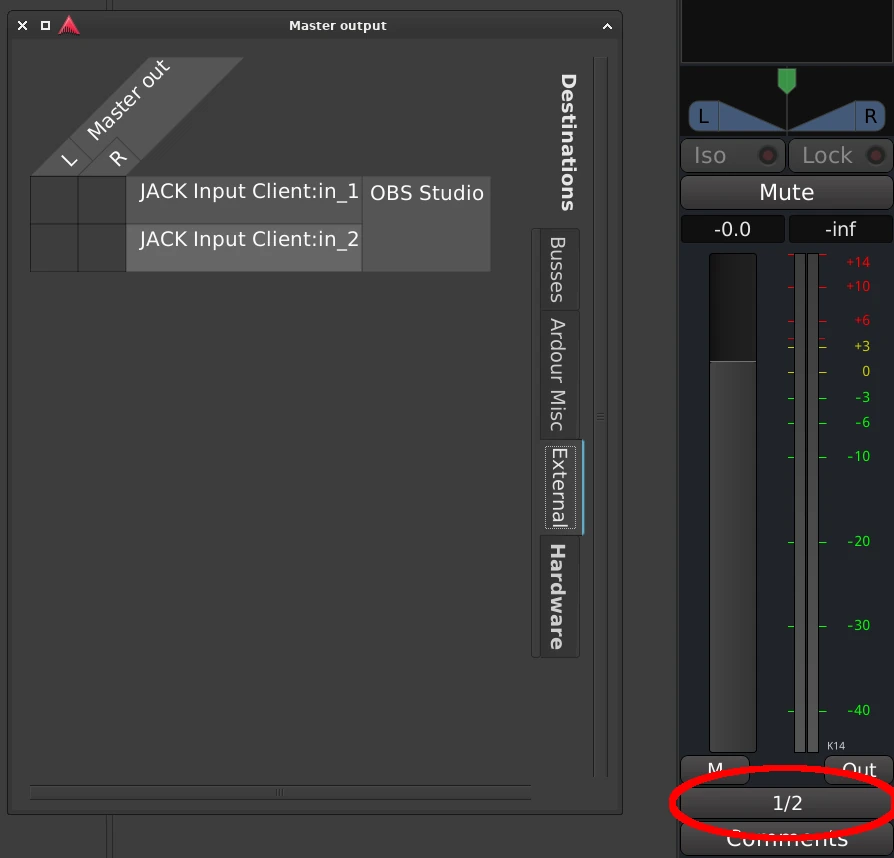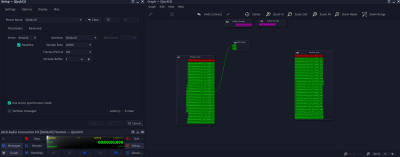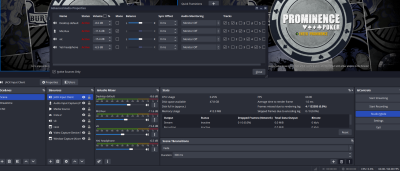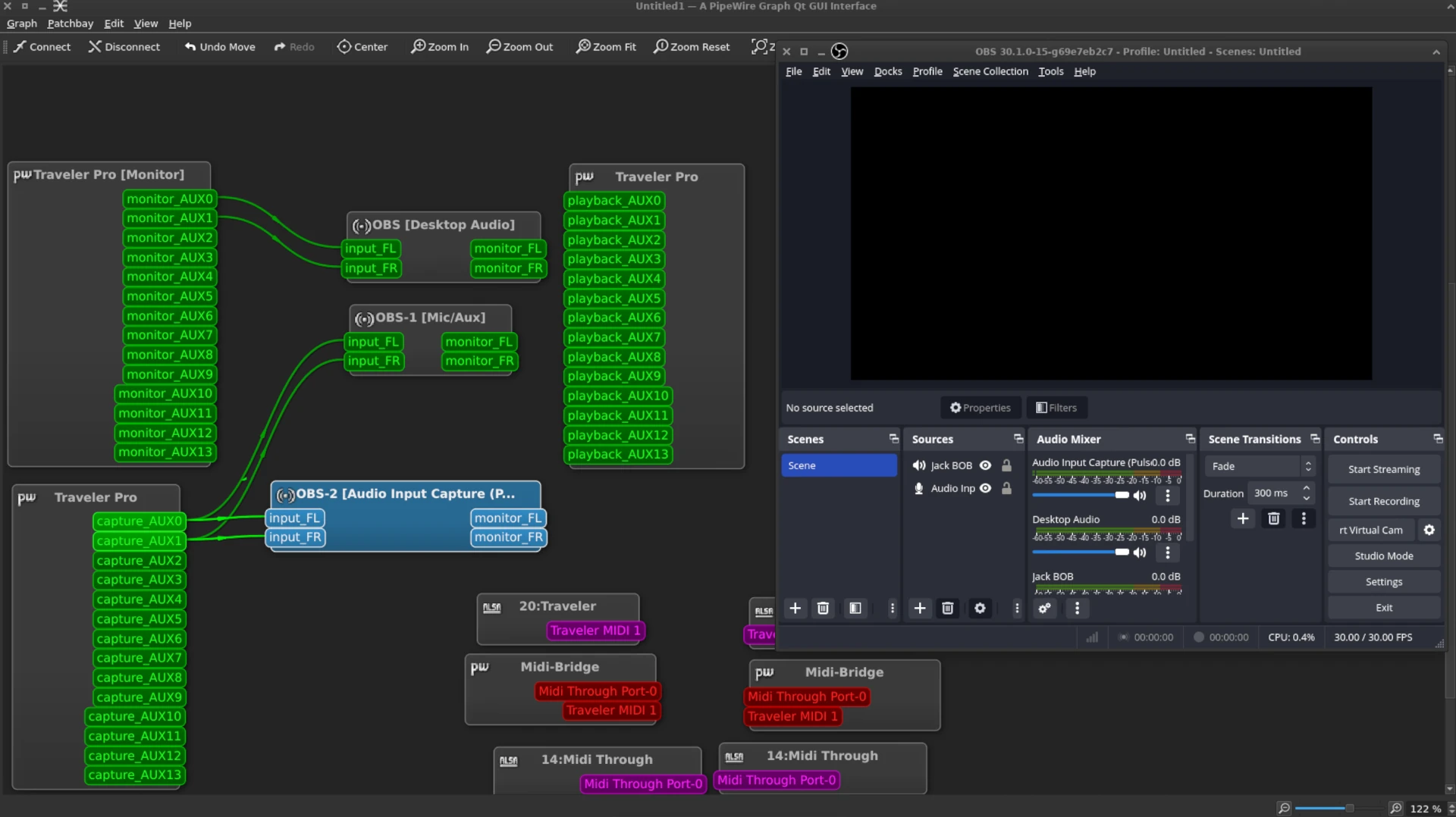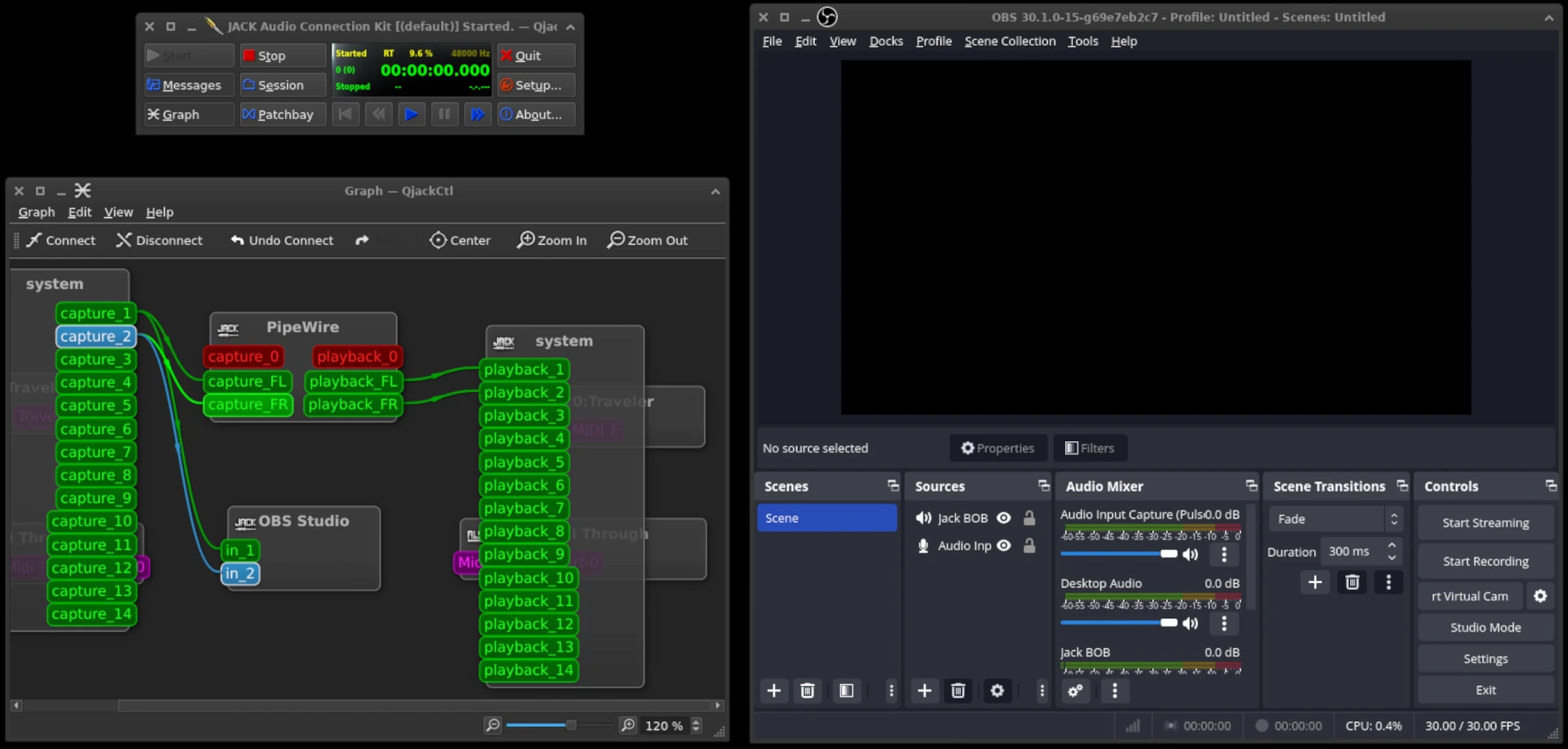I saw your post and video about the traveler and found one untested on ebay for $40. Surprise surprise it actually works as far as I can tell. I also picked up a Ti Firewire 1394b card to connect it up.
My computer is Ryzen 9, lots of Ram, 6800XT, on a Gigabyte B550 running Garuda with 6.8.1 zen kernel. KDE 6.0.2 on X11.
I don't quite understand how to get the Motu audio into OBS. Ardour seems to pick up all the connections and the qjackctl graph is well filled once Ardour opens.
My testing is that I have a stick mic plugged into the Motu and can see the VU on an Ardour track responding when I talk into it.
My audio experience is that if I see it in the speaker icon on the toolbar, I can click the things and hear the change.
I can see the settings on ffado-mixer match what is actually setup on the Motu and flipping buttons click relays on the hardware.
I set qjackctl driver to firewire and default on the dropdown in setup/setting. I also have your recommended list of blacklist items blacklisted.
blacklist snd-fireworks
blacklist snd-bebob
blacklist snd-dice
blacklist snd-firewire-digi00x
blacklist snd-firewire-tascam
blacklist snd-firewire-lib
blacklist snd-firewire-transceiver
blacklist snd-fireface
blacklist snd-firewire-motu
#blacklist snd_hda_codec_hdmi
#blacklist snd_hda_intel
#blacklist snd-oxfw
What are some next steps to plug these inputs through to OBS?
Connecting Jack to OBS is straightforward.
1. Add a Jack Input Client in OBS sources.
2. Connect the capture output of the MOTU to OBS in qjackctl using the graph.
Routing audio from Ardour to OBS is a bit different. Open the routing matrix on the track you want to route, select External, and route it to the OBS inputs.
Check out the IL Wishlist for upcoming project ideas.
I'm missing the system blocks I see in your screenshot when the driver is set to firewire.
After adding the Jack input client to OBS, I did get the new block for OBS Studio. However, if I restart jack, I have to delete the jack input client in OBS and add it again for it to appear in the jack graph again.
I only see the system blocks in the jack graph when I switch the Driver from firewire to alsa. But then, that looses all the firewire inputs.
I seem to get only one or the other.
I should have asked this first. Are you using PipeWire?
If so, FFADO support just showed up in 1.0.4, and I have not had a chance to test it. It requires additional configuration and will not work out of the box.
If you are running PipeWire, use the ALSA drivers in qjackctl and connect it to OBS using qpwgraph.
As for Jack inputs disappearing when you close Jack. That's intended behaviour since Jack is the sound server.
Jack should be started before running any applications you intend to use it with, and if you kill jack, anything Jack provided goes poof.
Check out the IL Wishlist for upcoming project ideas.
OK, I'll have to remember to restart OBS, etc. after stopping and starting jack instead of just restarting jack.
I do see pipewire installed and qpwgraph has a lot of connections except for the firewire.
My goal is still to use the firewire interface.
How would I get a mic that's plugged into the motu to send audio to OBS?
I'm not really sure how to ask the right question to get where I want to go.
I have no particular interest in using pipewire, it's just what Garuda uses with KDE. If there's a way to switch to something else that works with the motu, I'm more interested in that.
Since you are running PipeWire step #1 will be to go back and remove all the blacklisted items, save the file, and rerun update-initramfs -u followed by a system reboot.
Now install the following
*You will have to track down the package names for Garuda, but they should be similar.
pipewire-alsa - PipeWire ALSA plugin
pipewire-pulse - PipeWire PulseAudio daemon
pipewire-jack - PipeWire JACK plugin
Once that's complete, reboot the system.
Pulse & Pipes
Now when you launch OBS you will be able to see the MOTU Traveller MK1 in qpwgraph and connect it to PulseAudio or PipeWire sources in OBS.
JACK
If you want to continue using Jack, you will need to start the Jack server with qjackctl, launch OBS, then connect Jack to OBS using the graph manager in qjackctl.
This was tested on Debian Trixie using my MOTU Traveller MK1.
Check out the IL Wishlist for upcoming project ideas.
Yay, I was able to record a sample from the Motu connected mic into OBS. Now to plug in some other stuff.
I stumbled across pipewire-jack last week, but was reluctant to replace the jack2 package with pipewire-jack since I thought jack was required to get this going. The other pipewire packages were already installed so all good there.
Is the big drawback to the pipewire route the latency? At this point, I don't have any idea why that matters. I just know from listening to LGC that may be important eventually.
Mahalo for the clear instructions.



